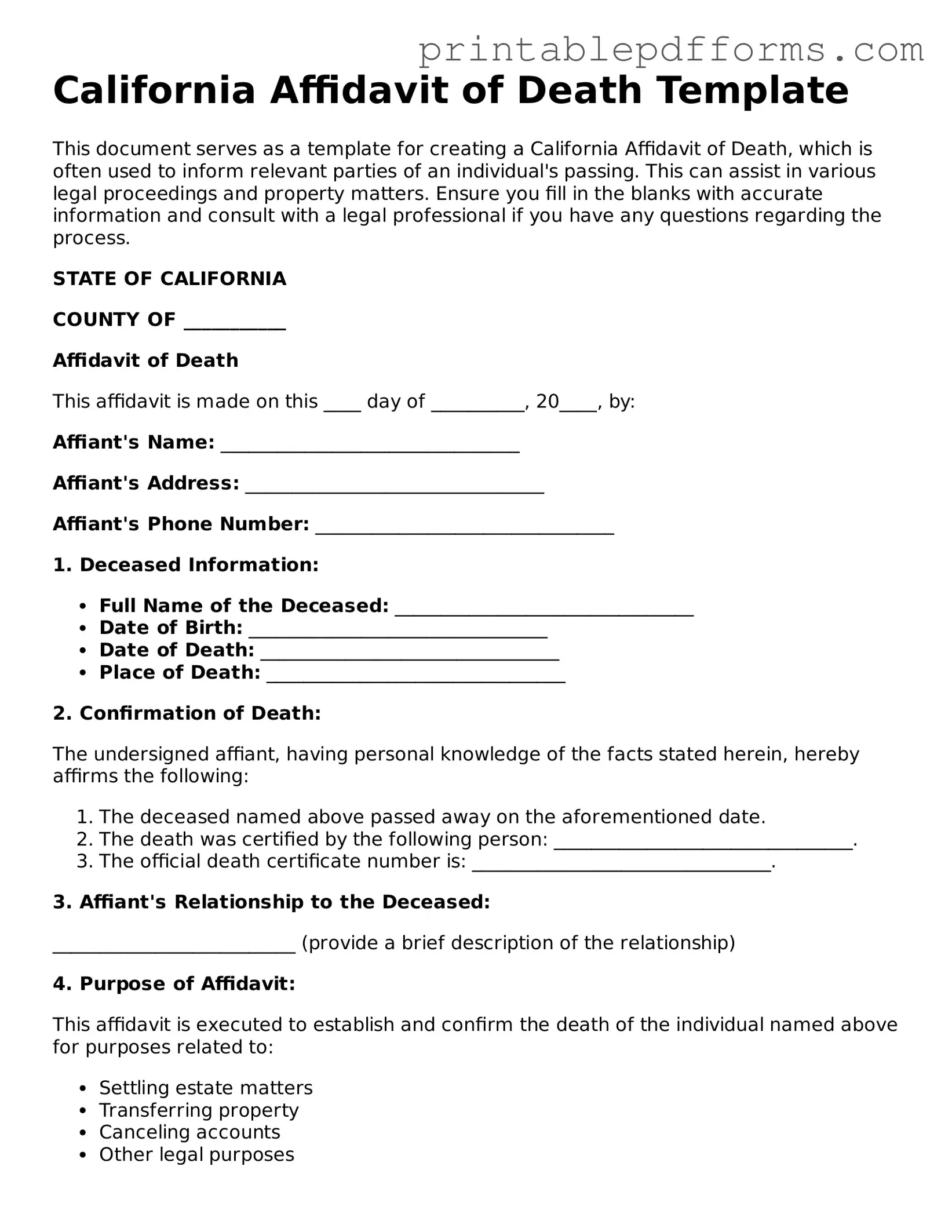California Affidavit of Death Template
This document serves as a template for creating a California Affidavit of Death, which is often used to inform relevant parties of an individual's passing. This can assist in various legal proceedings and property matters. Ensure you fill in the blanks with accurate information and consult with a legal professional if you have any questions regarding the process.
STATE OF CALIFORNIA
COUNTY OF ___________
Affidavit of Death
This affidavit is made on this ____ day of __________, 20____, by:
Affiant's Name: ________________________________
Affiant's Address: ________________________________
Affiant's Phone Number: ________________________________
1. Deceased Information:
- Full Name of the Deceased: ________________________________
- Date of Birth: ________________________________
- Date of Death: ________________________________
- Place of Death: ________________________________
2. Confirmation of Death:
The undersigned affiant, having personal knowledge of the facts stated herein, hereby affirms the following:
- The deceased named above passed away on the aforementioned date.
- The death was certified by the following person: ________________________________.
- The official death certificate number is: ________________________________.
3. Affiant's Relationship to the Deceased:
__________________________ (provide a brief description of the relationship)
4. Purpose of Affidavit:
This affidavit is executed to establish and confirm the death of the individual named above for purposes related to:
- Settling estate matters
- Transferring property
- Canceling accounts
- Other legal purposes
Affiant's Signature: ________________________________
Affiant's Printed Name: ________________________________
Executed this ____ day of __________, 20____, in the County of ____________.
Notary Public:
State of California
County of ___________
Subscribed and sworn to before me this ____ day of __________, 20____.
___________________________________
Notary Public Signature
My commission expires: _____________________
